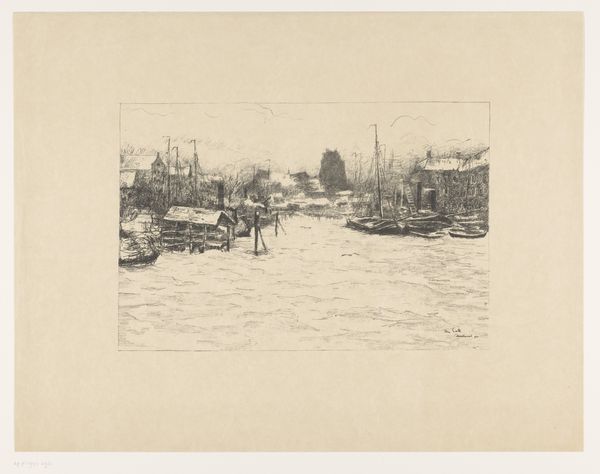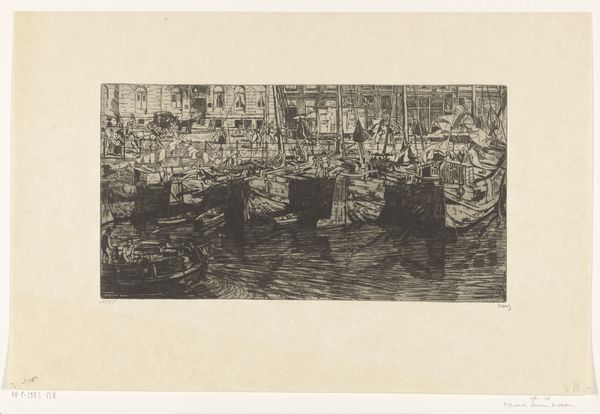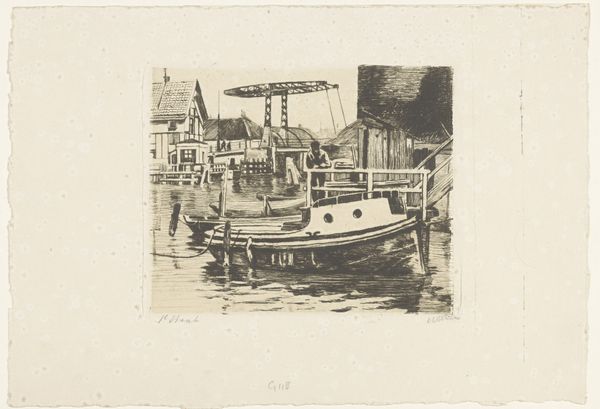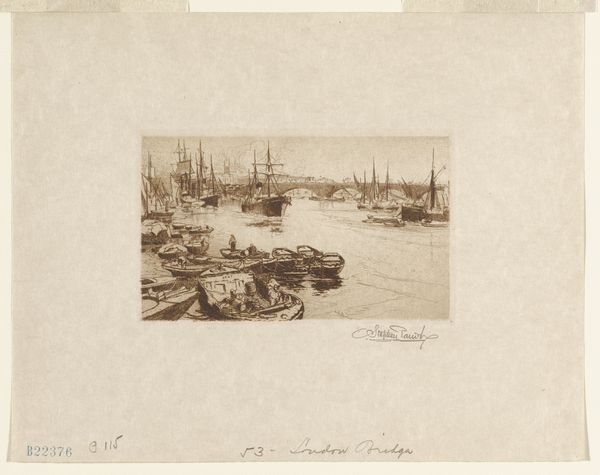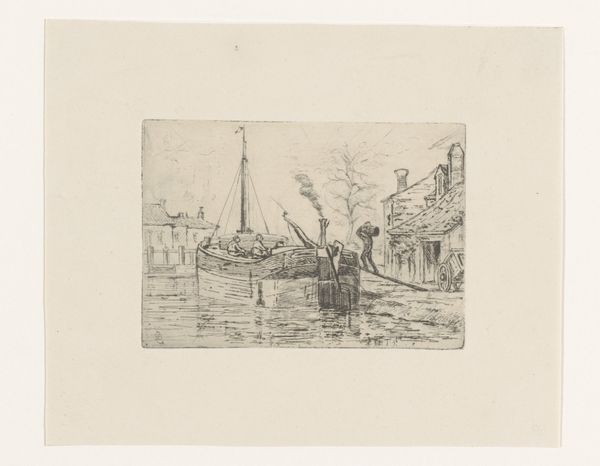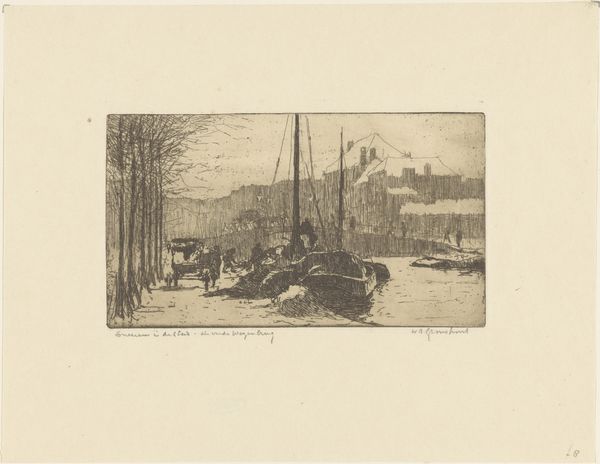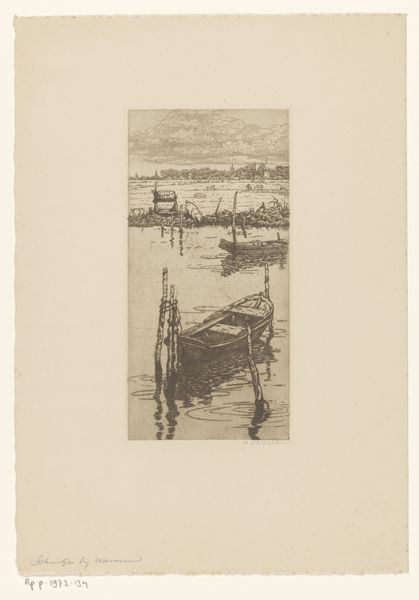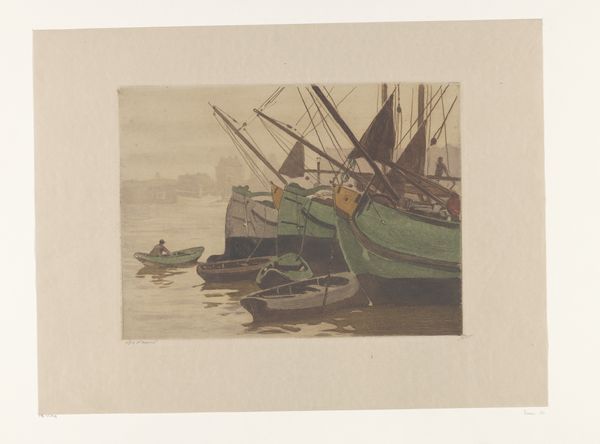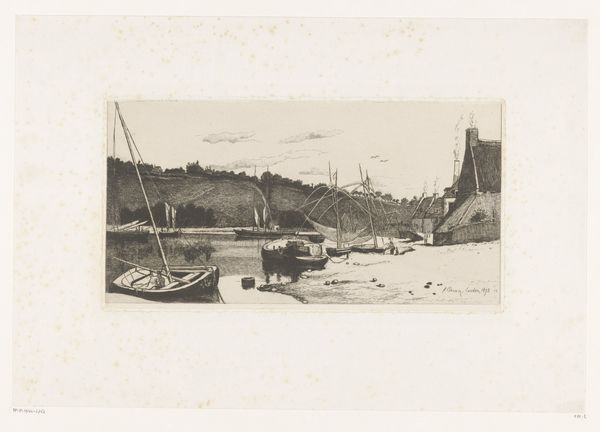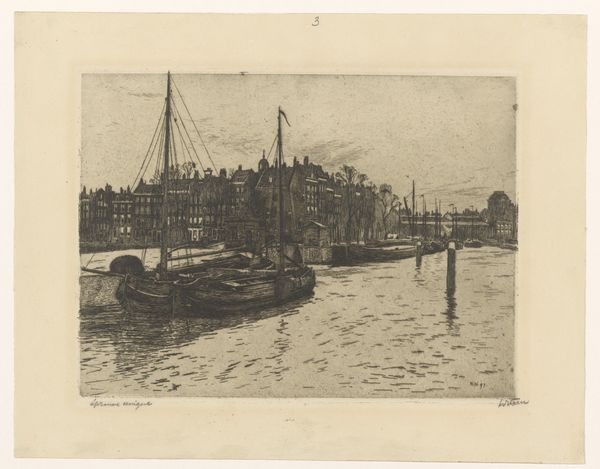
Dimensions: height 240 mm, width 325 mm
Copyright: Rijks Museum: Open Domain
Editor: This etching, "Aangemeerde boten aan het Damrak in Amsterdam" by Willem Witsen, circa 1906, has such a compelling, gritty feel. The monochrome palette really emphasizes the industrial nature of the scene. What stands out to you about this work? Curator: I immediately notice the emphasis on the printmaking process itself. Witsen uses etching – a technique involving acid and metal plates – to depict labor and trade within the Amsterdam cityscape. It bridges a gap between high art and what many would consider mere "craft." How does the choice of etching, a reproducible medium, affect its perceived value versus painting at that time, you think? Editor: That's interesting. So, because it’s an etching, and therefore more easily reproduced, does that make it a commentary on mass production, even in the early 20th century? Curator: Precisely! Consider also the "social context." The Damrak was the city's financial heart. Witsen doesn't romanticize; he shows us docked boats, potentially goods being transferred, highlighting Amsterdam's role in global trade and commerce. What do the blurred figures in the background suggest to you about labor at the time? Editor: Perhaps the disposable nature of the individual worker, obscured and blended into the industrial machine of the city itself. The materials used – the metal plate, the acid, the paper – they're all part of a system of production and consumption. Curator: Exactly! This work beautifully collapses those artificial boundaries between artistic expression and the social realities of production. What did you take away? Editor: I never thought about how much the *process* of creating a piece could be a statement in itself. It gives a whole new layer to appreciate in Witsen's work!
Comments
No comments
Be the first to comment and join the conversation on the ultimate creative platform.


